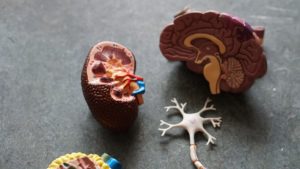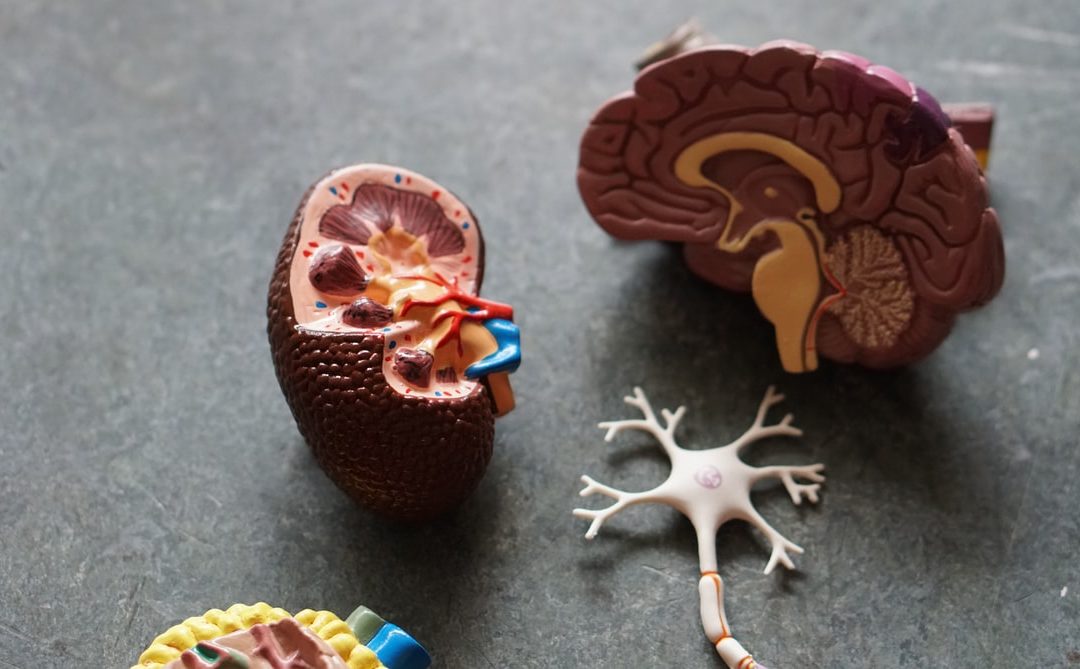That’s right, we actually have three brains!
The Primal, Limbic and Neocortex: these three brains work together, as one, to keep us alive. Each has a very distinct role and function, working interdependently to help us survive. I first learned of the Triune Brian when I was working for a non-profit, which specialized in helping at risk youth. I was a young counselor and became overwhelmed by how seemingly ordinary events would quickly turn into catastrophic incidents for the students. I turned to one of the agency founders and a mentor of mine who taught me about the “Triune Brain,” and she encouraged me to teach the kids about it as well.
 In the 1950’s, Dr. Paul MacLean proposed that the human brain is essentially three brains in one, a “triune brain.” His theories were based around the concept that the human brain evolved from a need to survive. For our purposes, we won’t be giving time to the depths of his theory or thoughts about evolution, rather the beauty of the proven design of our brain.
In the 1950’s, Dr. Paul MacLean proposed that the human brain is essentially three brains in one, a “triune brain.” His theories were based around the concept that the human brain evolved from a need to survive. For our purposes, we won’t be giving time to the depths of his theory or thoughts about evolution, rather the beauty of the proven design of our brain.
In order to survive, Humans have needed to react quickly to physical threats. If we spent too much time considering what we should do (Neocortex) if a Bear was closing in on us, it would be too late! Or if we became emotionally overwhelmed and began to uncontrollably cry (Limbic) but never fought back or ran away (Primal). Thankfully, this intricate system has helped us survive even the most primitive environments. Learning how to better manage our automatic responses and “brains” can be a key to more effectively addressing conflict and stress in our lives.
The first brain has been coined the “Reptilian Brain,”
it is also referred to as the Primal Brain because its main job is to keep us alive. It regulates basic life-support functions; such as our automatic breathing, also alerting us to when we need to eat or find safety. I like to think of it an enhanced radar detector quietly serving as an alert to imminent danger. It picks up on anything it deems a threat to our survival. It will then send a signal to the alarm.
When the second brain gets the signal, the alarm sounds off!
The second brain, or the “Limbic System” (including the amygdala, hippocampus, hypothalamus) adds behavioral and psychological resolution to all of the emotions we experience.
I call this the Emotional Brain. It develops based on instinct and past experiences. It stores emotional memories into the “emotional file bank.” In stressful or “triggering” moments the alarm is most commonly experienced as gradients of the fight or flight response. While we may not always run away from danger, we may feel like getting away from conflict, stress or unresolved issues. From a biological standpoint our designed alarm can be experienced as anxiety, our bodies way of alerting us to danger. Often we are experiencing “threats” to our survival, but they do not always appear as a physical danger, they could be threats to family and friends, threats to morals and values, or threats to our self-esteem and worth.
The third brain is the Neocortex.
Compared to the emotional and primal brain, the Neocortex is enormously sophisticated. The Neocortex generates higher cognitive functions, reasoning, and logical thought. I call this the Thinking Brain. When we are not truly in a life-threatening situation, we want this brain leading the way in making decisions about how we get safe and resolve conflicts. There are PET scans which show as the “primal brain” is activated by picking up on danger, and the “alarm” is going off, the Thinking brain actually slows down allowing the automatic systems to “take over.” When we can catch this and shift to use of intentional calming skills, especially slow breathing, we can better access the decision-making abilities of the thinking brain. This allows us to make intentional decisions about how to get and feel safe, rather than the automatic system just getting us there without regard for consequences.
Fascinating information, but how do we apply it to our normal day-to-day lives and relationships? Understanding these “brains”, and their interplay, helps with developing greater insight to our “triggers,” as well as developing calming skills when we are in conflict or increased stress.
Have you ever reacted inordinately to a situation and you weren’t exactly sure why? Most of the time when we catch ourselves overreacting, it is because we have experienced something that reminds us of a time when we felt unsafe or threatened. In those “triggering” instances, our “primal brain” will take over to help, automatically, to get us to safety again. It is important to learn to manage these automatic systems, while not letting them take over as they were designed to do.
How can we do that?
Here are some practical steps we can take to move from Primal brain back to Thinking brain in better understanding what is really going on for us when “triggered”:
1) Practice deep breathing skills –
this action helps calm the Amygdala and shifts us more to use of the rational thinking brain.
2) When “triggered” take some time alone to understand what might be happening for you, in those moments.
Journaling can help. Is something from the past getting stirred in a present situation?
3) Get yourself safe: physically, emotionally, spiritually.
Find ways to help yourself feel safe. This can involve developing daily, predicable, calming/“safe time” by engaging the five senses in calming activities ie: aroma therapy, warm blanket, soothing music.
4) Remind yourself of your worth and value.
Affirming quotes, verses or loving messages that reinforce your true gifts and value.
5) Seek comfort and affirmation from those whom you can trust, God or even professional support.
This act can help reestablish personal worth and security.

In short, our brains have designed into them an extremely sophisticated radar and alarm system designed to get us out of danger. The radar identifies danger, sends a signal to sound the alarm, the alarm goes off and we respond by getting safe: fight or flight. The automatic ways to get us out of life threatening situations often kick in where they may not be necessary. It is here where we feel like we overacted. This is common especially in times of conflict in intimacy or close relationships. These automatic reactions developed over time and experiences. The good news is that we can develop new ways to get and feel safe, in turn, developing new experiences that reinforce our value and worth.



